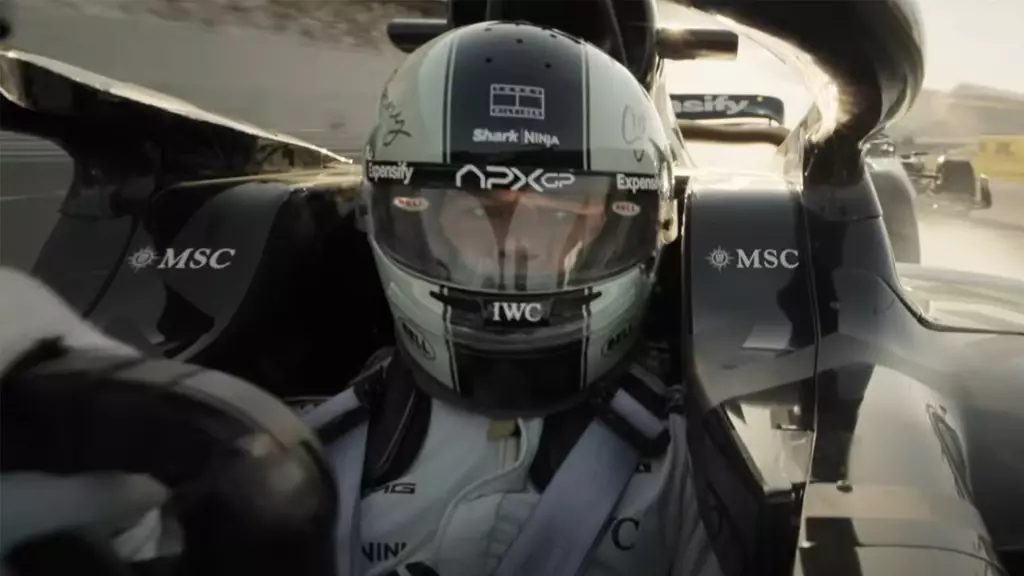When Apple Original Films decided to step into the theatrical arena with “F1,” few anticipated the spectacular opening weekend figures that would follow. Clocking in at over $55 million domestically from nearly 3,700 theaters, “F1” isn’t just a win; it’s a signifier of a tectonic shift in how streaming giants like Apple approach cinema. This is no humble indie release or a mild fan-service film—this is a Jerry Bruckheimer-produced, high-budget spectacle led by Brad Pitt, a proven box office magnet, and helmed by Joseph Kosinski, a director known for blending visual flair with thrilling narratives. For Apple, which has had its theatrical stabs occasionally falter or underwhelm, “F1” heralds a powerful comeback that few predicted.
This robust debut outpaces even Martin Scorsese’s much-hyped “Killers of the Flower Moon,” which, despite its acclaim and Oscar buzz, opened to just $23.2 million domestically. That stark contrast underlines how much public appetite remains for big, action-driven theatrical experiences, especially when backed by savvy marketing and star power. Apple’s investment is paying off not only in dollars but in reclaiming prestige and presence in cinemas.
A Fresh Demographic Breakthrough for Car Racing Films
Historically, motor sports cinema has been a niche—sometimes exhilarating but rarely massive in mainstream appeal. Yet “F1” has broken through these barriers in a remarkable way. It has attracted a notably young audience, pulling 30% of viewers from the coveted 13-24 age group— a demographic notoriously hard to engage with traditional moviegoing. This is not a small feat, especially for a film with themes that might otherwise skew older or more male-centric.
Such cultural penetration speaks volumes about the film’s marketing machine, one powered by Warner Bros. distribution know-how and Apple’s tech-savvy promotional strategies. Social media buzz has been electric with the movie amassing a reach of over 845 million across platforms. To put that in perspective, its digital footprint rivals high-octane franchises like “Mission: Impossible” and surpassed “Fast X,” suggesting that “F1” is not just financially successful but culturally potent.
Brad Pitt’s Renaissance and Strategic Star Power
Brad Pitt has been one of Hollywood’s most enduring stars, but it’s easy to forget that even he has had awkward career lulls. “F1” represents arguably his second-best leading role opening, trailing only behind “World War Z” from 2013. It’s a testament to careful project selection, celebrity influence, and the undeniable charisma Pitt brings to any screen.
Critics and audiences have responded with enthusiasm too, granting the film an impressive 97% audience score on Rotten Tomatoes and 84% critical approval. In an era when star-driven vehicles often stumble under the weight of franchise fatigue or diversified streaming tastes, “F1” proves that a well-calibrated blend of star power, production value, and genre appeal can still ignite the box office.
The Sonic Boom Shaking Up Summer Counterprogramming
Amidst the roar of “F1,” other releases like “M3GAN 2.0” are struggling. The sequel to the surprise Blumhouse hit, despite a more substantial budget than its predecessor, could only muster a fragile $10 million opening, well below expectations. This gap highlights a harsh reality: audiences crave novelty and scale during summer months, and counterprogramming horror sequels, even in an established franchise, often fall flat without the right cultural momentum.
The mixed critical reception for “M3GAN 2.0″—a mere 59% Rotten score compared to the original’s 93%—accentuates a growing weariness with recycled horror gimmicks. Meanwhile, strong competitors like Pixar’s new release and Apple’s “F1” are capturing both attention and revenue with fresh storytelling and spectacle. Studios must tread carefully when looking to sustain franchises in such an unforgiving climate.
The Global Perspective: Apple’s Strategic Expansion in Theatrical Spaces
Further validating “F1”’s success is its international appeal, obviously critical given the worldwide popularity of Formula One racing. Apple and Warner Bros. aren’t just content with a domestic smash; they’re targeting a $115 million global opening, which, if achieved, would elevate the film into true tentpole territory. With nearly half the promotional spend (50%) shouldered by Warner Bros., this collaboration shows the advantages of a thoughtful alliance between traditional studios and streaming giants trying to break free from the small screen.
This strategic push isn’t without risk—the movie’s reported production budget is near $200 million, and marketing costs add significant financial pressure. Yet, in an era when studios shy away from such “event” films outside franchise sequels, Apple’s bold move signals a renewed belief in big-screen experiences as a necessary complement to digital platforms. It’s a vote of confidence in the theatrical ecosystem, reminding both industry and public that cinema is not just viable but thrilling as ever.
Cinema’s Resilient Heart in the Age of Streaming
Ultimately, “F1″’s roaring start is more than just numbers; it’s a symbolic victory in a year when the theatrical market has often been overshadowed by streaming dominance. Apple’s success challenges the prevailing narrative that traditional cinema is dying or irrelevant. Instead, it confirms that with the right ingredients—an engaging story, star firepower, groundbreaking marketing, and an international-global game plan—movies can still ignite passion, conversation, and impressive box office returns.
This is precisely the kind of win that center-right liberalism can appreciate: bold entrepreneurship meeting market discipline; a creative industry combining artistry with commercial strategy; and a reminder of the importance of cultural products that unify diverse audiences. Apple’s “F1” is not just a movie launch—it’s a blueprint for how theatrical storytelling can thrive in the 21st century.

